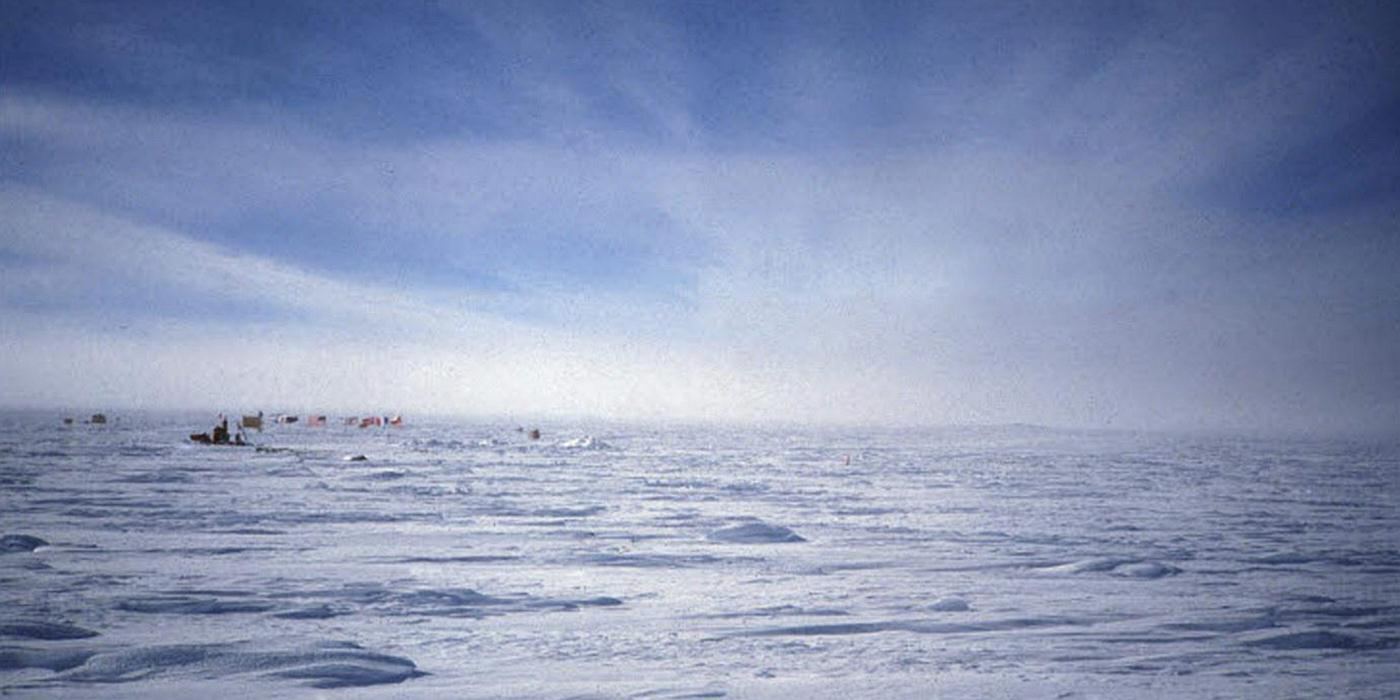Having lived at the South Pole for 13 months and fleetingly visited the North Pole, but having spent the better part of three years in the Arctic ice pack, I have a thing or two to say about both.
South Pole
Let’s address Antarctica and the South Pole first. Antarctica is a very large place: 5.4 million mi² (14 million km²) compared to the United States at 3.8 million mi² (9.8 million km²) (Europe and Canada are similarly sized). Virtually all of Antarctica is covered by a very thick ice sheet — it’s 10,000 ft (3,000 m) thick at the pole. This means that the South Pole is at an altitude of a 10,000 ft (3,000 m) mountain and the air is appropriately lean on oxygen. At the pole, the temperature rarely rises above -20° (-29° C), and typically is at -50° F (-46° C) or lower. During my 13-month stay there, we hit a record low of -117.8° F (-83.2° C). Except for the mountains near the continental edge that are not ice-covered and the spectacular glaciers flowing toward the sea, there is very little to see. The ice sheet is flat and featureless. Skiing is virtually impossible since normal skiing requires the ski’s friction against the snow to melt sufficient water to make the skis glide. In Antarctica, the temperature is too low for this to happen more often than not. It’s a bit like skiing on sand.
At the continental margins, you can find penguins (they taste awful!), seals of various types (fairly good eating if you know what you are doing), and cold-water fish of all kinds. The birds are edible, but don’t taste much better than penguins. Nothing, absolutely nothing grows. The only dangerous predators are the leopard seal (weighing in at 780 lbs – 350 kg) on both floating ice, in the water, and on snow-covered land near the shore, and the Orca (male Orca weighs up to 12,000 lbs – 5,400 kg) in the water.

North Pole
Now for the Arctic and the North Pole. I have been under the ice pack at the pole on subs, I have flown over the pole on planes, and I have trekked through the ice pack within a few hundred miles of the North Pole. One part of the ice pack is indistinguishable from any other so long as land is not in sight, and even then it’s difficult to identify your location without modern instrumentation. Ice thickness ranges from three feet (one m) or so at the ice margins to twenty feet (6 m) or more at the pole. The central parts of the ice pack are virtually lifeless, because polar bears, walrusses, and seals cannot penetrate the ice. Closer to the margins, however, and closer to shore, the ice is less thick, and water leads often open up. This is where you find virtually endless numbers of seals, walrusses, and quite a few polar bears. (Incidentally, polar bears are NOT dying off. The polar bear population in the 13 identified lines is greater than ever before except for one line in northern Canada where human incursion has driven the polar bears out.)
The Arctic is at sea level (except for mountains on the various pieces of land). Because it is not so cold as the Antarctic, skiing is possible. Near the ice margins and land, food is plentiful, and virtually all of it tastes good, if you know what you are doing. The only predators dangerous to humans are the polar bear (on land, ice, and in the water) and the Orca (in the water).
So…what’s the bottom line? I guess it depends completely on what your task is and whether or not you plan to live off the land. You decide!




